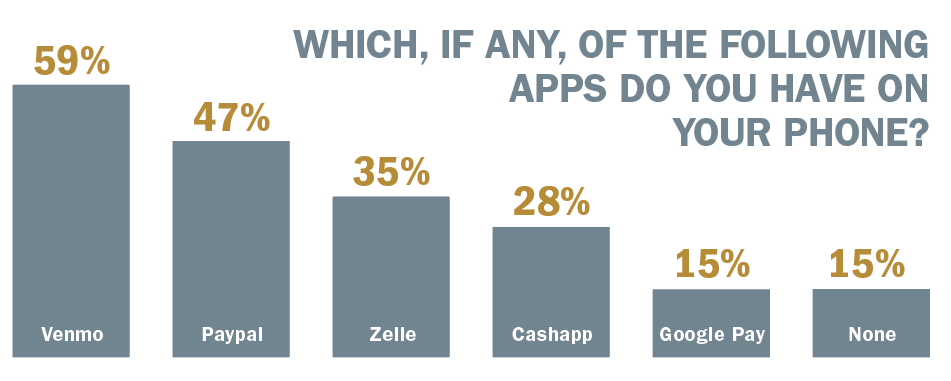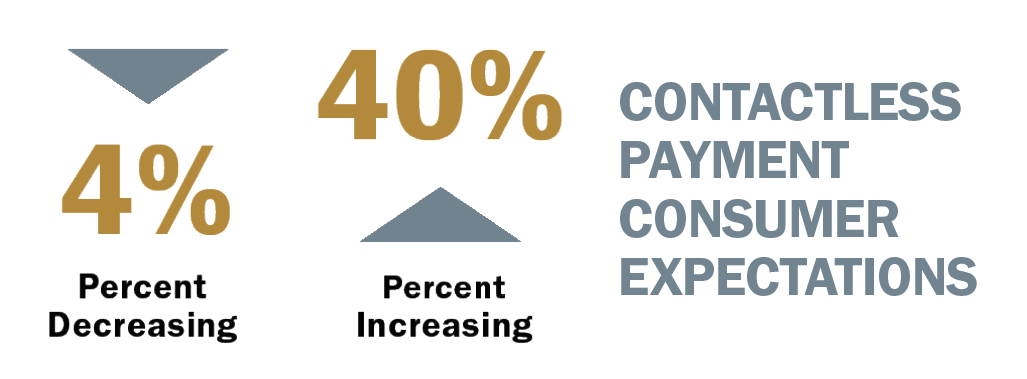Embracing Flexible Payment Options to Increase Contactless Parking Adoption
By Kristen Locke
The COVID-19 pandemic rapidly transformed what was once a slow but steady interest in contactless payments and digital experiences into an urgent need nearly overnight. The sudden, but not altogether unexpected, popularity of contactless experiences created shockwaves in almost every industry. Even as vaccination rates rise and a sense of normalcy returns, the demand for seamless digital journeys is here to stay and will continue to be a ubiquitous part of the modern customer experience.
The parking industry is no exception, and local governments, universities, and private operators across North America are taking action. The number of parking operators implementing or expanding contactless payment options saw a substantial increase in 2020 and 2021. However, many of them still struggle to find ways to fully capitalize on contactless payments’ potential benefits without confusing or alienating their parkers. More than ever, it is vital to understand the shifting landscape of new technology and customer preferences to increase digital payment adoption and tap into opportunities for added revenue and growth.

85% of respondents had at least one money transfer app or Google Pay installed. Over half have Venmo installed on their device.
The Future of Parking is Contactless
Since the pandemic started, the wide use of contactless payment in day-to-day life, from retail stores to the service industry, has made it more palatable to the average consumer than ever before. In a 2021 survey we conducted about the effects of COVID-19 on consumer behavior, 40% of respondents indicated they planned to increase their use of contactless payment in the coming year. This has been great news for parking operators who’ve long searched for practical ways to streamline their operations and reduce costs from maintaining on-street hardware such as meters or pay stations. 
In 2020, 40% of users expected to increase their use of contactless pay in the coming year (2021).
By and large, contactless parking has provided a strong return on investment and is popular with customers. Examining usage numbers from our clients in the United States, in places where parking apps were available, people chose to use them over traditional payment methods 76% of the time. The added convenience of a modern digital experience also encourages increased revenue and compliance, with 74% of contactless parking users choosing to top up parking remotely using their mobile device. Additionally, once introduced, contactless options tend to stick, and people who try them once tend to keep using them. Unsurprisingly, we’ve found the number of people who prefer to pay by meter in these areas plummeted by 20% between 2018 and 2020.
These trends only underline the fact that contactless parking payments have quickly shifted from being a convenient extra to an essential piece of modern parking operations.
Changing Customer Expectations Around Digital Experiences
Providing more customer choice has always been an essential driver of contactless parking adoption. By making more payment options available, there’s a much better chance of offering one that customers are comfortable with. But it’s important to note that “more choice” does not necessarily mean “more apps”. As people grow more comfortable using digital payment in general, they also tend to have stronger preferences for the apps and digital payment methods they’re already using. In today’s contactless landscape, expecting parkers to download a new app or to create an account may very well be asking too much. So, while a multi-vendor approach does undoubtedly increase consumer choice, it can be confusing for the consumer and add backend complexity for the operator. Most importantly, offering multiple apps may not truly address the core problems that hold back contactless parking adoption in the first place.
In other words, it’s not simply a preference for using digital payments over traditional methods that ultimately drives adoption of contactless parking. Instead, it’s the convenience and better customer experience that make long-term contactless parking successful.
Further, today’s most popular digital payment methods aren’t popular in isolation but as part of a wider ecosystem of apps, services, and features that is constantly changing. Put another way, a standalone payment app that can’t leverage other services lacks long-term appeal for consumers who are used to interconnected experiences. When we asked our customers in 2020, 70% of respondents said that having interconnected processes was an important part of winning their business. It’s equally important for modern contactless parking solutions to integrate seamlessly into backend enforcement and payment processing systems as well as the wider network of popular consumer technologies.
Innovation in the Contactless Parking Landscape
To meet a wider variety of use cases and to make digital payment more accessible, top solution providers have doubled down on providing more ways to bring the benefits of contactless parking outside of an app, including:
- Pay by Text: A feature that lets users text a number to initiate a parking session without downloading an app. Having texting options is important for less tech-savvy users so they can launch the payment experience via weblink.
- Pay by Web: A lightweight mobile web experience that allows users to quickly pay for parking without downloading the full app.
- Pay by Guest Checkout: Creating a new account is a frequent cause of friction for many customers, especially in areas with tourists or other short-term visitors. Guest checkout options remove this common hurdle.
- Added Value for App Users: Instead of only acting as an option for digital payment, a full-featured parking app can provide additional value for customers, providing information on things like parking availability and more.
- 3rd Party Payment & Sign in Options: Increasingly, people expect to be able to use one login or payment method across a wide variety of apps. Integrating parking payments with popular third-party services like Google and Apple help increase revenue by tapping into their existing user bases.
Including features focused on accessibility and equitability has had tangible results. We’ve seen contactless parking usage almost triple in some areas where flexible, non-app payment options were introduced.
Considerations for Successful Contactless Implementation
Utilizing the right technology is only one aspect of driving contactless parking adoption. Equally important is having an effective implementation and marketing strategy. Whether your goal is to eventually phase out meters and pay stations all together or simply to provide an additional payment option, there are several best practices to make your rollout as smooth as possible.
Develop a Marketing Strategy Early
Education, communication, and interfacing is critical to the success of any contactless program and should be a top priority when choosing a vendor. Many contactless solution providers can spread important information to the public by helping you effectively leverage social media, local news, and other sources. In addition to educating people about the solution, these early marketing pushes give parking operators a chance to address any pressing questions and concerns before the technology is even available on the street.
Effective Signage is Crucial
The importance of effective signage in driving contactless parking adoption is often severely understated in the climate of increased social media and digital marketing. Signage alone was responsible for introducing a new app or mobile payment method to 55% of our users in 2020. Keeping signage up to date is also important, and we’ve found that periodically updating existing signage can increase new app users up to 17%.
Incremental Rollouts are Highly Effective
Cities that successfully made the shift to asset-light or even mobile only noted phased or incremental rollouts of new contactless solutions were most effective in ensuring a smooth transition. Starting with one or two sections of a city or campus at a time is easier logistically and gives you a chance to fix any initial technical hiccups on a smaller scale. As a general rule of thumb, parking operators should try and follow a cycle of small rollouts, tests, then expansion.
Choose a Flexible Technology Partner
When choosing a technology partner to roll out or expand contactless parking, parking operators should carefully consider not only what customers can use to pay but also how they can do it. To stay agile and keep ahead of unexpected changes, seek out flexible solutions that can integrate with your backend systems while still offering a wide variety of modern, convenient payment options. While multi-vendor is always an option, working with the right single vendor has the advantage of drastically increasing customer choice without adding complexity to backend payment and enforcement systems.
The Future of Contactless Parking is Still Evolving
With the COVID-19 pandemic came an unprecedented burst of innovation in digital and contactless experiences across North America. At this point, even if someone is not actively using some form of mobile payment, they still probably have some familiarity with what it is. For parking operators who have not yet taken the plunge into modernizing their payment options, now is the ideal moment.
However, despite people’s comfort with modern payment methods, implementing contactless solutions can potentially be a double-edged sword if you’re not careful choosing the right technology partner. To make a long story short, people are less willing to accept a substandard mobile payment experience. Unless you offer a convenient and intuitive solution that people actually enjoy using and that lets them pay how they want – on an app, via the web, or through third parties – you’ll struggle to make it stick in the long run.
The parking technology landscape is still evolving. It’s impossible to predict exactly what the next big innovation will be. Successful, modern contactless strategies can’t only rely on trying to pick the “right” technology for today. Instead, parking operators should focus on technology providers that are flexible, collaborative, and are willing to adapt to new trends as they emerge.
About the Author
Kristen Locke, CAPP, is the Senior Regional Sales Manager at ParkMobile. She can be reached at Kristen.Locke@ParkMobile.io






